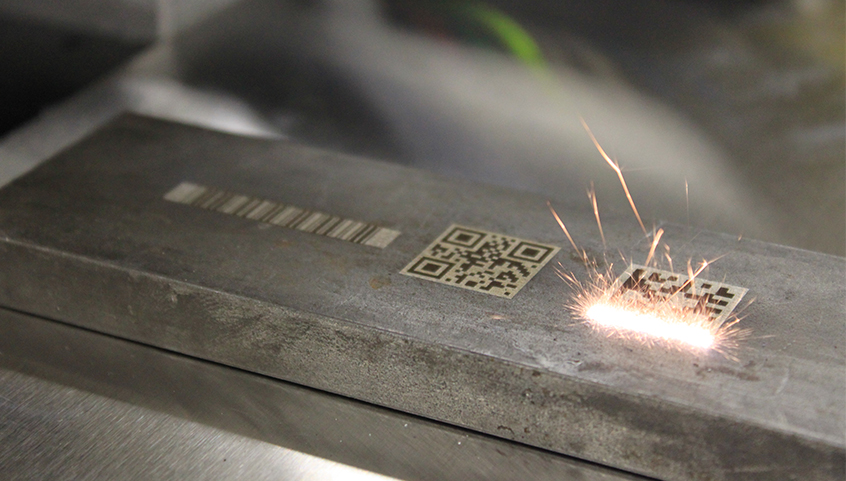Laser marking of metal: some considerations

CO2 and fiber laser systems are very popular for engraving metal with barcodes, serial numbers, and logos.
It is your best choice for industrial marking applications since fiber lasers have a long operational life, require little maintenance, and are relatively inexpensive. Using these lasers, a permanent, high-contrast mark is produced without compromising the integrity of the part.
Several sprays (or pastes) are used to treat metal before engraving with a CO2 laser. Marking agents are permanently bonded to bare metal by the heat from the CO2 laser. The CO2 laser can also mark a variety of materials – including woods, acrylics, and natural stones.
Epilog’s fiber and CO2 laser systems are exceptionally easy to use and can be controlled with almost any Windows application. Check out lasitlaser.pl to learn more.
Differences in lasers
There are some considerations to be made when using different types of lasers on metals.
Using a CO2 laser for marking metals, for instance, requires more time since metal marking agents must be applied before the laser can work. Lasers with high power and low speed must also be used to ensure adequate bonding between the metal and the marking agent. After lasering, users may remove the mark using a towel – an indication that they need to run the piece at a lower speed and higher power setting next time.
By using a CO2 laser, you can mark metal on top of the metal without removing any material, so the tolerance or strength of the metal is not impacted. Additionally, coated metals, such as anodized aluminum or painted brass, require no pretreatment before application.
The fiber laser is the best engraving method for bare metals. Many materials, such as aluminum, brass, copper, nickel-plated metals, stainless steel, ABS, PEEK, polycarbonates, and engineered plastics, can be marked with fiber lasers. There are some materials, however, that are difficult to mark with a laser beam of the device’s wavelength; for instance, transparent materials can pass the beam through, leaving marks on the engraving table instead. Using a fiber laser system is possible to mark organic materials such as wood, clear glass, and leather, but this isn’t the best application for the system.
Mark types
With a fiber laser system, you can choose between a wide range of options based on the type of material you want to mark. Lasers vaporize material from objects’ surfaces, which is how engraving works. As a result of the beam’s shape, the mark is often cone-shaped. In harsh environments, multiple passes through the system can create deep engravings, which prevents the mark from wearing away.
The ablation process is similar to engraving and is often used to expose the underlying material by removing the top coating. Metals that have been anodized, plated, or powder-coated can be abated.
The surface of an object can also be marked by heating it. As a result of exposure to high temperature, a permanent oxide layer is formed, leaving a high-contrast mark without altering the surface finish. During foaming, gas bubbles form on the surface of a material, which are trapped as it cools, resulting in elevated results. The process of polishing involves quickly heating a metal surface in order to change its color, producing a mirror-like surface. Steel alloys, iron, titanium, and other metals with high levels of carbon and metal oxide are good candidates for annealing.
Considering the material aspects
As long as the laser’s speed, power, frequency and focus are adjusted to meet stainless steel’s needs, it can be marked in a variety of ways, including annealing, etching, polishing, etc. It is often possible to obtain much higher brightness with fiber laser marking on anodized aluminum than with CO2 laser marking. Fiber laser engraving on bare aluminum, however, produces less contrast, since shades of gray are produced instead of black. On aluminum, deep engraving can still produce a black etch when combined with oxidizers or color fills.
Different types of lasers
Because different types of lasers have different effects on different materials, some considerations should be made.
Metals, such as steel, require more time to mark with a CO2 Laser marking on metal because metal marking agents must be applied before marking. Besides bonding at low speeds, high power, and low speed is also required of the marking agent. Once the mark has been washed off, it’s time to run the piece at a slower speed and higher power.
CO2 lasers don’t remove material when marking metal, so tolerance and strength are not compromised. Anodized aluminum and painted brass are examples of treated metals that do not require pre-treatment.




